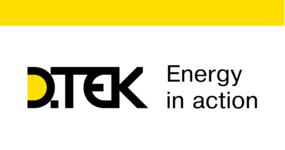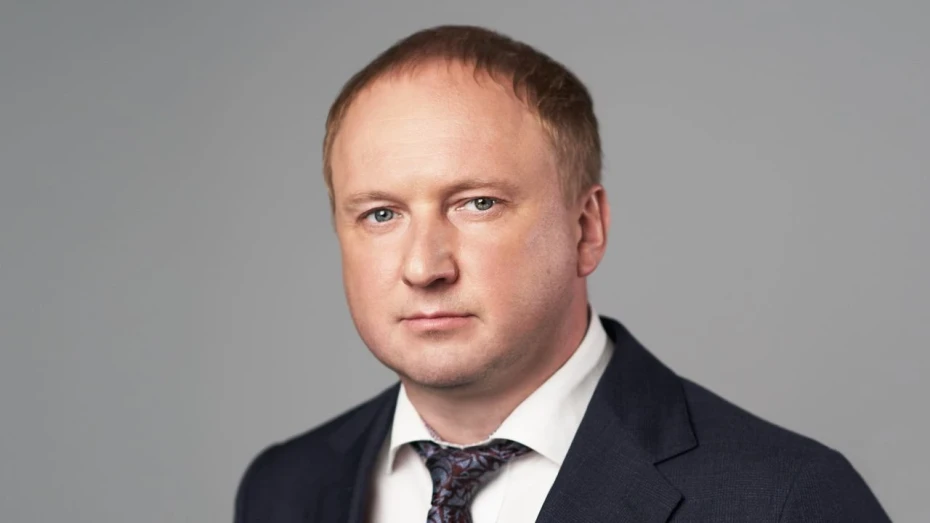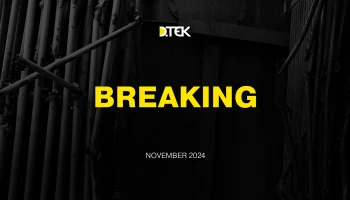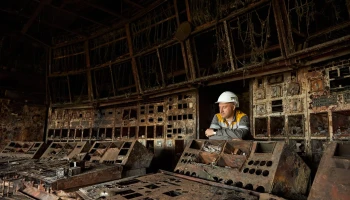Energy blackmail has become an apparent economic weapon for Europeans, which Russia used against the EU countries immediately after its invasion of Ukraine. However, Russia's goal of pacifying democratic countries with high fossil energy prices amid ongoing war crimes is failing and only accelerating the transition to renewable energy sources.
This is confirmed by the meeting of G7 leaders, who are assembling the Climate Club to reduce the consumption of dirty and bloody energy resources by developed countries, as well as the previously approved REPowerEU plan.
Ukraine can partially replace Russian fuel for the EU. The country has a significant surplus of generating capacity due to the decline in domestic consumption as a consequence of war damage and industrial destruction. The possibility of green electricity exports, which have been developing rapidly in the country over the past few years, has particular potential.
However, the Russian invasion did not bypass the Ukrainian renewable energy sector, including the largest market player DTEK Renewables, which owns eight solar and wind farms.
In the interview to the EU Reporter, Alexander Selischev, CEO of DTEK Renewables, told about the company's first urgent steps to preserve its assets since the beginning of the big war, the number of solar and wind power plants in the occupied territories, technical and economic problems of the market players and steps to be made to preserve the future of green energy in Ukraine and help the country to better integrate into the European energy space.
How has the company been doing since the start of Russia's full-scale invasion to Ukraine?
A few weeks before the full-scale invasion, an Anti-Crisis Headquarters had already been created at the level of the DTEK Group. Its members were assessing the situation in the country and working out a system for responding to all kinds of emergencies to ensure the stable operation of critical infrastructure and the safety of employees.
The events of February 24 came as a great shock to everyone, and we had to adapt to the company's work under the circumstances of military action. One of the main tasks was to ensure the safety of people and preserve assets and the company. We are doing everything to keep DTEK Renewables afloat.
What about the state of your generating facilities?
We managed to keep the assets, but it's not possible to operate all of them. The country's energy infrastructure was damaged during the hostilities, and the plants just have nowhere to supply electricity.
At the same time, our key solar power plants are now operating stably. Moreover, at the beginning of the invasion, we had installed six wind turbines at the Tiligulska wind farm - the construction of Ukraine's largest and one of Europe's largest wind farms has been underway there.
Our facilities help supply electricity to the Ukrainian energy system. We have generated a total of about 200 million kilowatt-hours of green electricity since the end of February.
Under what conditions can your wind farms resume operation?
We're now working in a format, in which that the day after our victory, our enterprises will start functioning in their normal, pre-war mode. As for the technical conditions, in order to resume operations, we will need to restore the damaged facilities of the power grid infrastructure in Ukraine. It's also important for us to ensure that the employees of our power plants can perform their functions without health and life hazards.
How did the full-scale war affect the renewables industry in Ukraine?
Before the full-scale war, the country had a 1.6 GW сapacity of wind power plants and a 7.6 GW capacity of solar power plants, including household on-roof solar power plants. According to our analytics, 75% of wind power capacities and 15% of solar power capacities of Ukraine are in the temporarily occupied territories of Ukraine.
One of the problems for the working stations is the low demand for electricity due to the fact that 30-40% of the electricity consumption in Ukraine has decreased. Many household consumers are de-electrified and large enterprises are not working or have been destroyed. In this situation, the renewable energy sector is subjected to restrictions on supply.
In addition, a small number of renewable energy facilities have been damaged. Some solar power plants in the regions affected by the Russian invasion have been damaged. There is also information about several destroyed wind turbines.
In fact, every shell that hits a wind turbine or a solar power plant is barbaric. This is a battle between the past and the future, even in matters of energy. I am sure that Ukraine will not only restore all the damaged green capacities but will switch to renewables even more confidently and quickly.
But the key problem in renewables right now is the deteriorating economic situation.
What exactly is going on with the economics of the renewables sector?
The critical situation in matters of the economy was caused by the fact that the Ministry of Energy's Order No. 140 of March 28 has restricted the producers of renewable energy in the receipt of revenues for the electric power generated. This severely hit the ability to make payments even on operational activities, not to mention the ability to service loans.
In March and June, payments to generators at the solar and wind power plants did not exceed 16%. To put into perspective how little it is, the level of payments should be at least 30% to fully cover the operating costs, and at least 50-55% to service loans. Companies can pay the principle of the loan only if the level of repayment is up to 90%.
The industry was sympathetic to the issuance of Order No. 140 in the early days of war. But today we see that the whole market has stabilized and there is every reason to raise the level of payments. The Ministry of Energy has taken a step toward achieving this goal by issuing Order No. 206. Its effect will make it possible to raise the level of payments to 30%.
What actions can the government take to achieve a payment level enabling companies to repay their loans?
According to our estimates, it is quite realistic to bring the level of payments to renewables generators to 100% by the end of the year. There should be a stage-by-stage plan to improve the economic situation in the renewables sector, which would be understood by all – businesses, the government, and investors.
Today much depends on whether funds from the sale of renewable energy will be directed to the sector, on the active work of the Guaranteed Buyer, and on the position of Ukrenergo in terms of the payment of its obligations to the renewables sector. In particular, as far as Ukrenergo reported to the industry, they have accumulated funds to meet a large part of their obligations to the renewables sector.
But we also know that outside the system operator certain plans are already being formed for these funds. We would like to avoid a situation in which funds intended for financing the renewables sector are being used for other purposes.
Is it possible to say that the situation is deplorable for all electricity market players, not just renewables?
There are certain problems in all segments of the electricity market caused by the occupant aggression, but the payment level of 30% is "exclusive" for renewables only. According to our estimates, it is possible to balance all types of generation to an acceptable degree, if we do not create artificial distortions in someone's favor at the expense of regulatory decisions.
How has the war affected the company's relations with investors and creditors?
We are in a constant dialogue with investors because the war has reduced the level of payments to the renewables sector. In order for this discussion to be effective and for all parties to understand the prospects for improving the situation, we need a conceptual plan for the recovery of the industry. This, in turn, requires a dialogue with the state to find the best solution to increase the level of payments. And this task is not instantaneous. We are working every day to figure out how to find the best solution in the triangle of "investor-business-state". The entire renewable energy industry of Ukraine faces such a task. And everyone must make efforts to solve it. Investors can make concessions, but the state must also make concessions, so as not to fall off a cliff.
We all need to remember that these are the same investors which, we hope, will help restore Ukraine's economy. Therefore, it is very important to have a transparent and trusting dialogue.
How has the situation with the Russian invasion changed your plans to build new renewables capacities in Ukraine in general?
Due to the war the company had to temporarily suspend development projects and focus on survival. In particular, the development of wind power plant projects with a total capacity of more than 700 MW in the Poltava and Zaporizhzhia regions was stopped.
What is happening now to the territorial communities where your company has built its plants?
The communities where our assets are located have always received financing from the company for different social programs, that they considered necessary and highly prioritized – maintenance of schools and kindergartens, water line pulling and others. In most cases, our social projects began even before any work started at the sites of future power plants.
Of course, in the conditions of this aggressive war, humanitarian support projects received first priority. We keep in touch with the territorial communities in the territory controlled by Ukraine, we ask for their needs and help accordingly.
Together with the Rinat Akhmetov Foundation, our company provides humanitarian support to the Zaporizhzhia, Mykolaiv, and Dnipropetrovsk regions. About 150 tons of food kits, medicine, and various auxiliary equipment have been already donated.
Are there any cases of foreign energy companies helping territorial communities which have humanitarian problems?
Our international partners pay attention to the humanitarian situation in the communities and help, which is especially valuable in such difficult times. They allocate humanitarian cargoes, and we transfer them to the places where they will be in the most demand.
For example, we recently delivered a mobile deep water purification system from AFTA Group in partnership with the UN Global Compact in Ukraine, as well as lighting equipment from Schneider Electric for the Mykolaiv region. The work with humanitarian aid does not stop even for a day.
What impact does the synchronization of Ukraine with ENTSO-E have on renewables companies?
First of all, synchronization with ENTSO-E leads to increased reliability of the entire Ukrainian energy system. This is especially important given the fact that we are at war. The European power grid can back up Ukrainian colleagues at any time by providing additional capacity in an extraordinary or emergency situation in Ukraine.
An increase in exports to Europe will make it easier to balance all the sources of generation and remove limits for enterprises of renewable energy.
According to your estimates, how much has the ability to export Ukrainian electricity to Europe increased now?
Export to Europe in the direction of Hungary, Slovakia, and Romania in the amount of 100 MW resumed at the end of June. After the installation of frequency control equipment in Ukraine, the capacity of commercial flows may reach 1.5 GW.
The project to restore the Khmelnytskyi nuclear power plant - Rzeszow line has been started. The project is divided into two stages. This year it is possible to restore the line and get 1 GW, in the future with more serious reconstruction and construction of networks the export capacity can be brought up to 2 GW. In addition, there is a serious project to restore interstate networks with Romania (up to 2 GW).
The total export capacity in the medium term could be 10 GW, taking into account the construction of new facilities. This amount of electricity can significantly help European countries to reduce energy shortages and, as a consequence, reduce abnormally high prices in their markets.
Realization of this potential requires coordinated actions of both NEC "Ukrenergo" and ENTSO-E to implement projects on expanding system connections.
Can Ukraine become part of the global European plan RePowerEU, which involves increasing the energy security of all European countries?
The new EU energy strategy RePowerEU, among other things, involves the significant participation of Ukraine in ensuring the future energy security of the EU. We can do it at the expense of the considerable wind and solar resources of the country, the potential for gas production and the availability of infrastructure for its storage, and the potential production of hydrogen, and biomethane. I'm sure that the state and businesses in Ukraine fully support this plan.
This is the strategic direction of the development of the Ukrainian energy sector, which requires significant investments in the development of grids, generating capacities of renewable energy, maneuvering capacity, and energy storage equipment.
The future of Ukraine, as well as the EU's, is undoubtedly connected with clean energy, and DTEK is bringing this future closer step by step. So we will have a lot of work to do.






